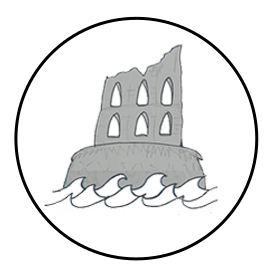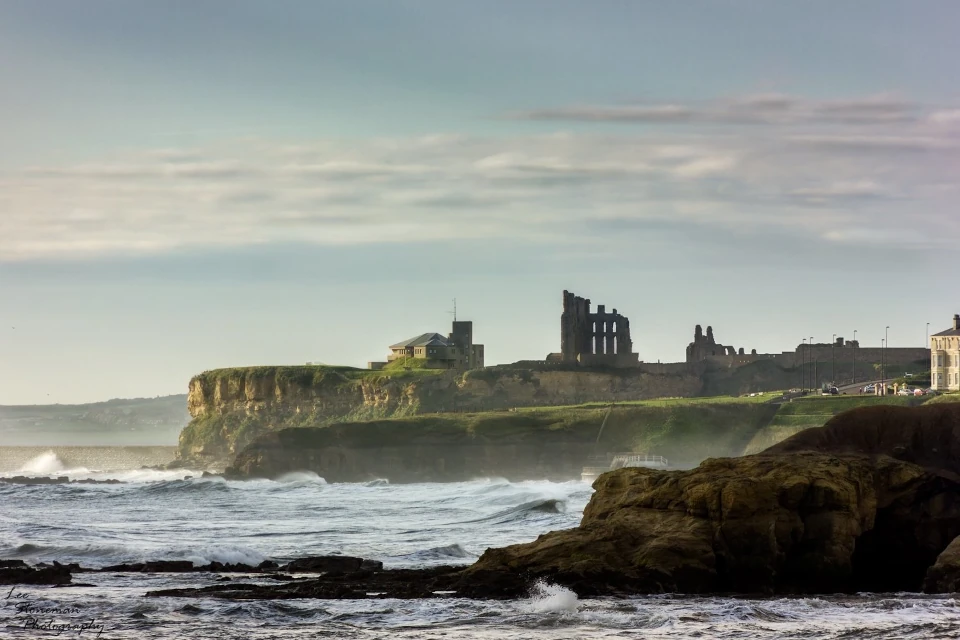Northumbria — Land of Kings & Saints
Part 3 — Cuthbert & Vikings
10. Cuthbert — I
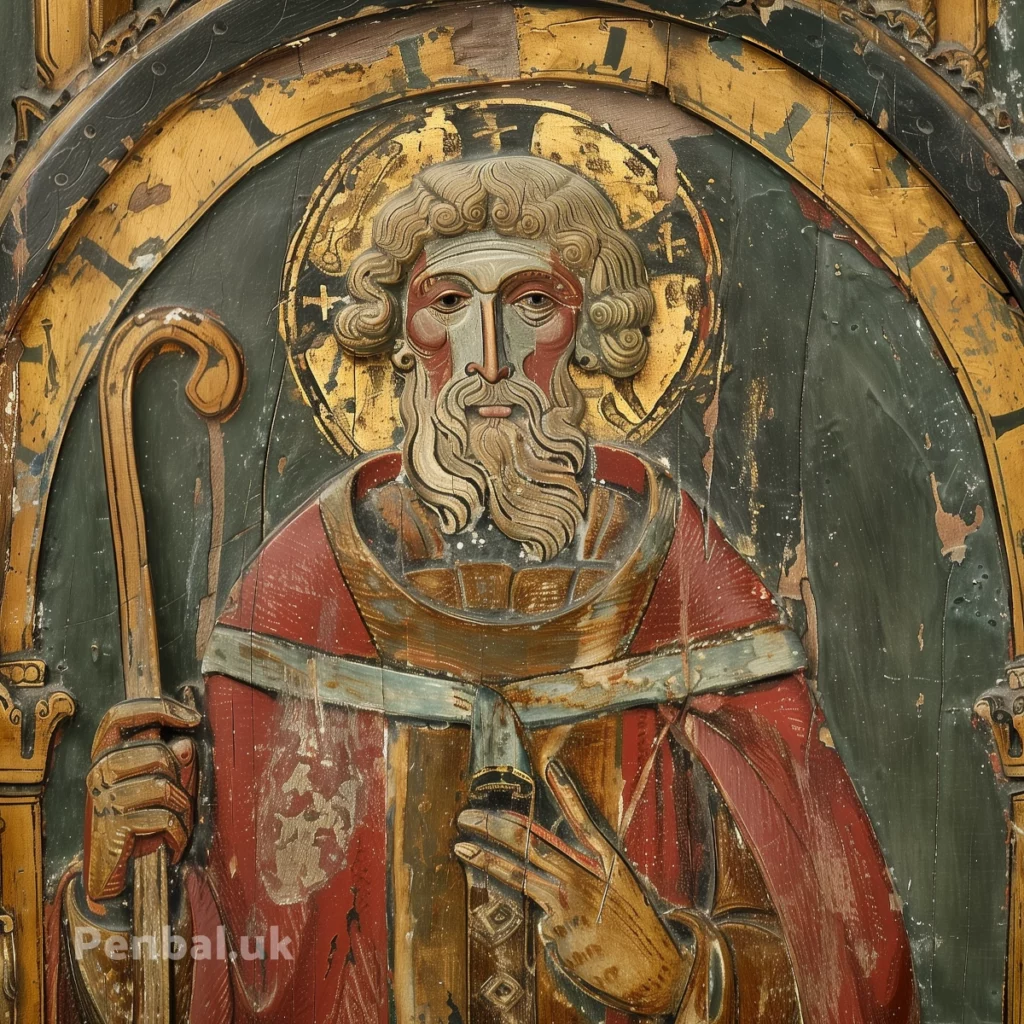
Now we come to the C in the ABC of Northumbrian saints: Aidan, Bede and Cuthbert. Cuthbert was born in 634, so that means he was born months before the founding of the Priory on Lindisfarne. At the age of 30 he became the Prior of Lindisfarne.
Cuthbert died in 687 when Bede would’ve been 14. He is the patron saint of Northumberland and up until the 12 century was the most venerated saint in England. It is thanks mainly to Bede, that we know a lot about his life. One of the first stories we have about him is set in Tynemouth and represents the very first mention of Tynemoutb or Tinanmuðe in the pages of history.
The story goes that the monks from St Hilda’s Monastery, that was founded by Aidan and being built at South Shields, were bringing stone from up river on 5 rafts, but as they came to the harbour, a wind blew up and carried them far out to sea. Their comrades were powerless to save them and prayed from the Lawe for their rescue. Across the water in Tynemouth a crowd had gathered, people who were not Christian, but pagans, and they jeered the monks, shouting that they deserved their fate. Saint Cuthbert, who was a young lad at the time, was among this crowd. He berated and shamed them for cheering the death of innocent people, before kneeling to pray and commanding the storm to cease. At which point the weather calmed, the tide changed and the monks reached the shore on the Durham side safely. From that point this tale became part of Tynemouth’s early folklore.
11. Cuthbert — II

In 686, when in his 50s and after 20 years of ministering on Lindisfarne, Cuthbert became a hermit on Inner Farne as he faced the last period of his life.
During his ministerial life he was evidently a skilled orator, a man of great zeal and the preeminent preacher of his time. But later in life he preferred solitude, though he found it difficult to achieve this given the demand for his teachings. Although his original place of refuge was on Cuthbert’s Island close by the main island of Lindisfarne, in order to find perfect sanctuary he removed himself to Inner Farne where he could not be pestered by visitors. His cell on Inner Farne is yet to be excavated and may yield some fascinating relics or insights.
What ascetics like Cuthbert, Aidan before him and many others were seeking was a ‘thin place’ and Holy island is certainly that. A thin place is a concept carried over from the pagan or Celtic world, where a sparse environment brings you closer to the spirit world than a busy urban place. This is why Iona and other isolated spots were chosen as the sites of the first monasteries outside of Ireland.
Religious syncretism is the practice of imposing Christian ideals and festivals on top of existing pagan ones, and the early Christians in Northumbria used thin places like Holy Island, where there is felt to be less distance between heaven and earth, to bring them closer to God. You can feel that there, you can really feel that Holy island is a thin place.
12. Vikings — I

The consensus is that Holy Island was decimated once the Vikings started arriving, but the archaeological record is turning up a new understanding of the time: that the islanders were able to stay and flourish and must have been able to defend themselves adequately. The amount of stone carvings like ornate and huge crosses as well as a plethora of name stones indicates that lots of this expert masonry was exported to other parts of the kingdom. All this happening under continual threat and supposed oppression of the Heathens.
We see the statue of Cuthbert in Lindisfarne Priory. From the time of his death, when a beacon was lit on Inner Farne to signal to the waiting monks several miles away on the Heugh, his remains were interred on Holy Island. His body was removed in 875 to the mainland, the year Tynemouth Priory was burnt to the ground and the nuns and monks murdered.
But in later years, as the Danes converted to Christianity they too venerated and worshipped Cuthbert. Later Viking settlements gradually became more sedentary and more accepting of peaceful trade. In short, they adopted the way of life and customs of England.
13. Vikings — II
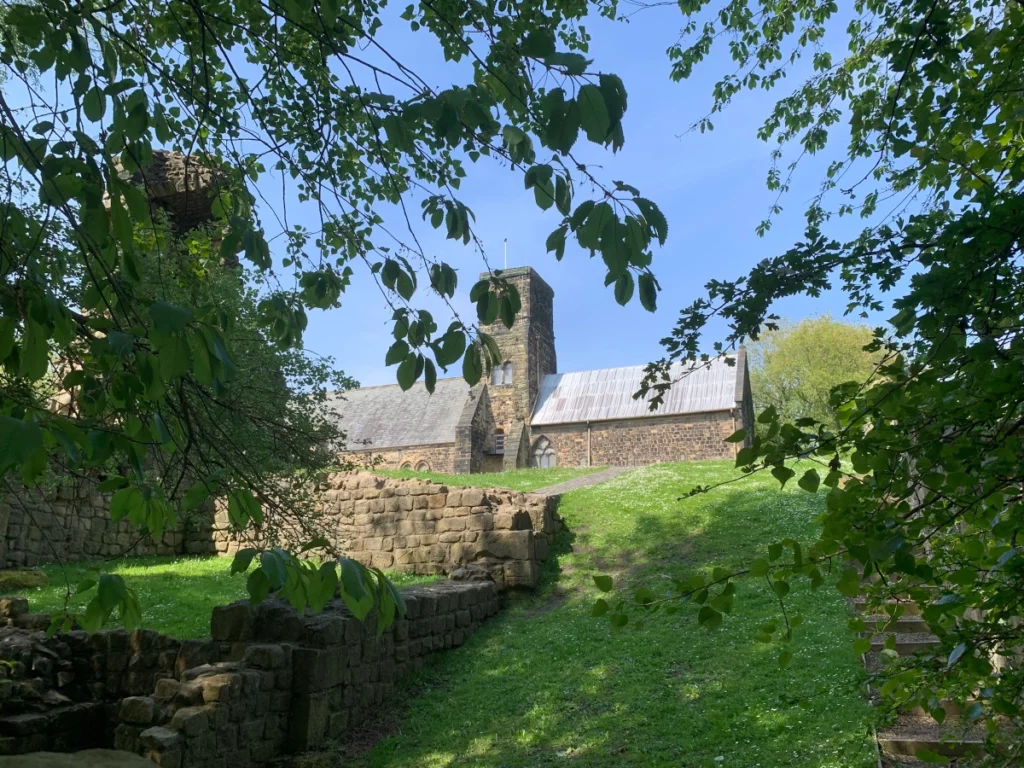
This area where the River Don meets the Tyne was not so long ago a large tidal pool called Jarrow Slake. Now it’s almost completely built over as an enormous carpark serving continental demand for vehicles.
It’s said that at the time of the founding of the monastery it was called King Ecgfirth’s Port. Ecgfrith being the King who endorsed Benedict Biscop’s church building and who was killed just a few weeks after founding St Paul’s, while fighting the Picts in Scotland. Ecgfrith was the king who persuaded Cuthbert out of retirement just before his death. But it was Ecgfrith’s death in 685, in his prime, that spelled the end of the dominance of the Kingdom of Northumbria in Britain.
It was just over a century later that, that this port received the boats of a new power, a foreign power and a heathen one.
In 794, one year after the first Viking raids in England on the island of Lindisfarne, Jarrow was attacked by marauding Norsemen. The world famous library may have been burned down and many monks slaughtered. But the people here may have also got one key win over these terrifying invaders.
14. Vikings — III
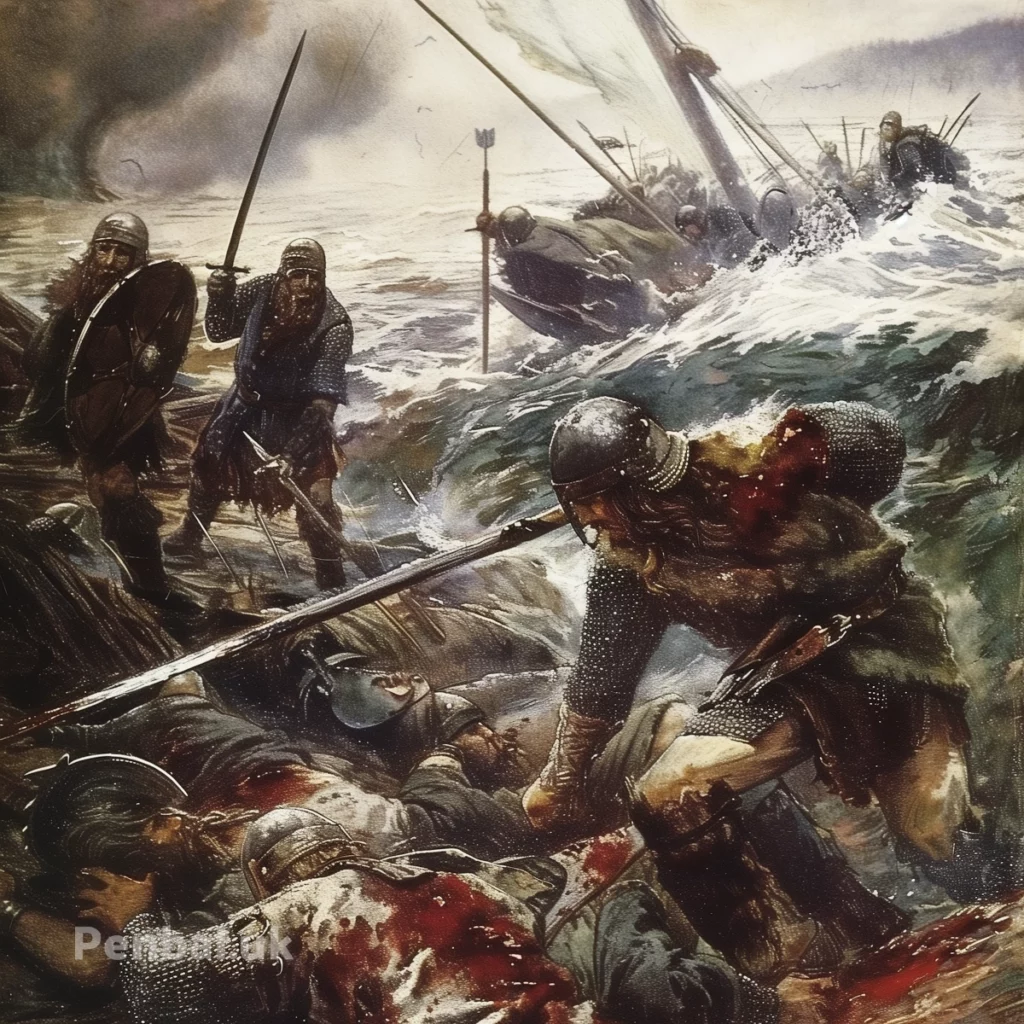
According to Symeon of Durham, a 12th century monk and key medieval historian who studied at Jarrow, the Viking raiders received a severe check in a naval battle at Jarrow Slake. Unexpectedly for them, the people of the monastery fought back and killed the Viking chief.
Not only that, as the Vikings retreated in their ships, a storm rose up and wrecked their boats at Tynemouth on the infamous Black Middens, which are just hidden at high water and have cost the lives of many sailors through the ages.
For the ones who could cling onto the rocks or what was left of their ships, their fate was to be given the coup de grace by the waiting local folk, who simply walked out and slaughtered the remaining heathens once the storm and tide receded.
It was probably from this severe check in their exploits that England was not attacked for six more years, when in 800 they returned and razed Tynemouth Priory. And when these Norse peoples began to arrive en masse from the mid 9th century, it was the altogether more ambitious Danes that began not just laying waste to the place, but leading sustained full-scale invasions of Northumbria, the rest of the British Isles as well as much of Europe.
The Vikings eventually adopted the trappings of wealth and power and became absorbed into the deep cultural space of England. It seems the English earls who ruled northern Northumbria were after a time able to cling onto power in an uneasy comprise with the invaders. Lindisfarne may have been able to continue as a community in relative isolation from the upheaval experienced elsewhere. But the golden age of monastic tradition established in this land was very much snuffed out for the next two hundred years.

Part 1 — Britons & Romans
Part 2 — Angles & Christians

